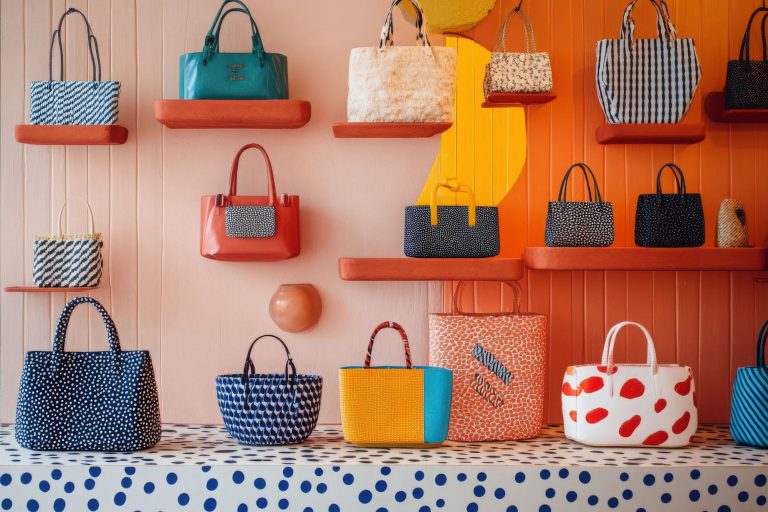Explore a stylish range of bags from handbags, cute wallets & fancy sling bags.
Handbags and wallets are everyday essentials. They go everywhere with us — to work, on errands, and even on special occasions. While they often seem like simple accessories, the design, structure, and usability of a woman’s handbag or wallet for women can affect daily comfort and organization in more ways than we realize.
This article explains how handbags and wallets developed into practical necessities, how to choose the right ones, and how to maintain them for long-term use.
1. Why Handbags Matter in Daily Life
A handbag isn’t just a fashion item — it’s a small, portable storage space. It helps organize personal belongings like keys, phones, cosmetics, and documents in one accessible place.
The main features that make a handbag useful are:
- Space and organization: The right handbag should fit what you usually carry. Compartments or pockets make it easier to find small items quickly.
- Comfort: The strap length and weight of the bag matter. A bag that feels heavy when empty will become uncomfortable once filled.
- Durability: Handbags are used almost every day. Strong stitching, good zippers, and sturdy materials ensure that the bag lasts longer.
- Adaptability: Neutral-colored handbags with simple designs work well for both formal and casual occasions.
Over time, handbags have become more than a convenience. They now represent personal style while serving a practical function. The key is to choose one that fits your needs, not just your outfit.
2. Wallets for Women: Small but Essential
A wallet for women may look like a small accessory, but it is one of the most used items in daily life. It stores essentials like money, identification cards, receipts, and sometimes even small personal notes.
A good wallet is built around organization and security. Some important features include:
- Size and shape: Slim wallets fit easily into handbags and are lightweight. Larger ones are useful if you carry coins or multiple cards.
- Compartments: A proper layout keeps everything in place — cards in slots, coins in a zipped section, and cash neatly folded.
- Material: Leather, faux leather, and fabric are common. Each has pros and cons — leather lasts longer, while fabric wallets are lighter and easier to clean.
- Closure type: Zippers and magnetic buttons help secure the wallet’s contents.
Although small, a wallet is handled more often than almost any other accessory. That’s why it should be durable, easy to clean, and comfortable to use.
3. Choosing the Right Handbag and Wallet Combination
Handbags and wallets are usually used together, so it helps when they complement each other in both size and function.
When choosing them:
- Match proportion — a compact wallet suits a smaller handbag, while larger handbags can hold longer or wider wallets.
- Think about ease of access — the wallet should be easy to reach without digging through your bag.
- Avoid overloading — both the handbag and wallet should close properly even when full.
You don’t need matching colors or materials. A bit of contrast can make the combination more stylish while staying practical. What matters most is that both items make your day-to-day routine simpler.
4. Understanding Materials and Their Benefits
The choice of material affects the weight, appearance, and life span of a handbag or wallet. Here’s a breakdown of common materials:
- Leather: Durable and ages well, but requires care to avoid cracking or staining.
- Faux leather or vegan alternatives: Affordable and cruelty-free, though they may wear out faster.
- Canvas or fabric: Lightweight and washable, great for casual use but not ideal in rain or heavy wear.
- Synthetic blends: Often used to make affordable and colorful handbags. Quality varies depending on the manufacturer.
When buying or using handbags and wallets, it helps to pay attention to finishing touches like stitching, zippers, and buckles — they often decide how long the item will last.
5. Everyday Care and Maintenance
Regular maintenance extends the life of your handbag and wallet. Here are simple steps that make a difference:
- Clean gently: Use a soft cloth to remove dirt or dust. Avoid harsh cleaners that damage color or texture.
- Store properly: Keep handbags in a dry place and stuff them with paper to maintain shape. Don’t store them in plastic; fabric covers are better.
- Avoid overloading: Too much weight can stretch straps or deform the structure.
- Rotate use: Switching between two or three bags helps prevent wear and tear.
- For wallets: Empty them occasionally, remove old receipts, and clean corners or zippers.
With these small habits, both handbags and wallets stay functional and presentable for years.
6. Current Trends in Handbags and Wallets
Though their purpose hasn’t changed much, designs and trends continue to evolve. Modern handbags and wallets reflect lifestyle changes and technological needs.
Some noticeable trends include:
- Smaller sizes: Many people prefer compact handbags and wallets to travel lighter.
- Multi-use styles: Convertible handbags that can be worn as crossbody or shoulder bags.
- Neutral tones: Colors like beige, brown, olive, and black are popular because they match most outfits.
- Sustainable materials: Eco-friendly fabrics and recycled leather alternatives are gaining attention.
- Minimalist designs: Clean, simple lines are replacing heavy decorations.
Following trends is optional — what’s more important is choosing what suits your daily use and comfort.
7. How Lifestyle Affects Your Choice
There’s no single “best” handbag or wallet. The right one depends on where and how you’ll use it.
For work or office use, a medium or large handbag with compartments can hold essentials like a notebook or tablet. A structured design helps keep everything organized. A slim wallet that fits neatly inside makes daily transactions quick and easy.
For casual outings, smaller sling bags or totes are convenient, paired with a lightweight wallet that carries only essentials. During travel, a crossbody bag allows hands-free movement, and a zip-around wallet adds extra security.
Your accessories should suit your pace of life, not the other way around. A practical setup saves time and keeps you comfortable.
8. Simple Buying Considerations
Before buying a handbag or wallet — online or offline — take a few minutes to check practical details:
- Capacity: Think about what you carry daily. Choose a size that fits your essentials without feeling bulky.
- Comfort: Try the strap or handle length. Make sure it doesn’t strain your shoulder or arm.
- Ease of use: Check how smoothly zippers open and close.
- Material care: Read labels for cleaning instructions.
- Weight: Lightweight bags are better for long hours of use.
These checks help you make a sensible choice that lasts longer and fits your lifestyle.
9. The Value of Simplicity and Function
In the end, the best wallet for women and women sling bags are those that make everyday life easier. They don’t need to be expensive or overly stylish — just reliable, well-made, and suitable for daily habits.
Functionality should always come before fashion. A bag that fits your schedule, a wallet that holds what you need, and materials that are easy to care for — these are the real qualities of good accessories.
Whether you’re heading to work, running errands, or meeting friends, your handbag and wallet quietly support you throughout the day. Choosing them with thought and care ensures that they do their job well — and last for years to come.







Comments are closed.